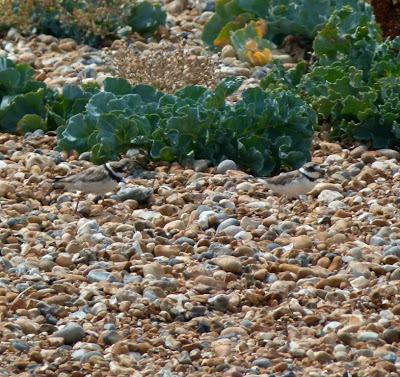Hi all
I have been exploring our local beaches with my buddy Steve. As you know I have visited some amazing places in my travels, coral reefs, ship wrecks and many different coastlines in the in the US and Hawaiian Islands.
But I did not realise just how much wildlife we can find on our own beaches here in the UK. As you know my local beach is covered in a rare habitat called vegetated shingle but this only grows above the high tide line. There is very little beach exposed at low tide, so I have not seen much seashore life. However, this year I have seen some amazing marine life on other local UK beaches.
So here is some of the wildlife I experienced this year with my buddy Steve.
These are some of the seabirds I saw on Kingston beach, not far from the nature reserve, in a small bay inside Shoreham harbour.
This is a little egret, it stalks along the edge of the incoming tide catching small sea creatures in its long sharp beak.
We also saw this sandwich tern resting on the sandy mud
In the river, we saw this cormorant catch and eventually eat this eel.
I never thought it would manage it and the eel put up a fight but eventually the cormorant gulped it down.
These ringed plovers were on the vegetated shingle
There are other fascinating animals on Kingston Beach, inside the harbour.
This is a shore crab
This chalk is poking through the pebbles
I was amazed to find these piddock shells that burrow into the soft chalk to hide from predators.
This is a sea anemone, closed up because it has been uncovered by the tide
These sea defences provide places where animals can live
Here you can see some dog whelk eggs. The white shell behind is an adult dog whelk. They are predators, they eat mussels by drilling a hole through their shell. You can see where a dog whelk has drilled a hole into the mussel shell in the picture. The dog whelk has a special tongue with teeth for drilling.
The snakelock anemone is living in a pool at the bottom of the defence. This anemone cannot close up when exposed by the tide and the stings on its tentacles may hurt. You can recognise it by the purple tips. The tentacles are green because they have an algae living inside them - just like coral.
This clam lives in the sand, it burrows using its foot and feeds from the tubes
It was good to know that we have such fascinating wildlife living on your local beaches. Why not visit your local beach and see what you can find. You can leave me a message and tell me about what you have seen.
Bye for now
Ed the Bear




















Great shots here! In your "cormorant vs eel" capture the bird was really able to swallow that whole (about 2 feet long?) eel down?? Was the eel able to wrap around the bird and did it get eaten still desperately wriggling about?! Keep it up! ;)
ReplyDeleteMexicankyle35@gmail.com